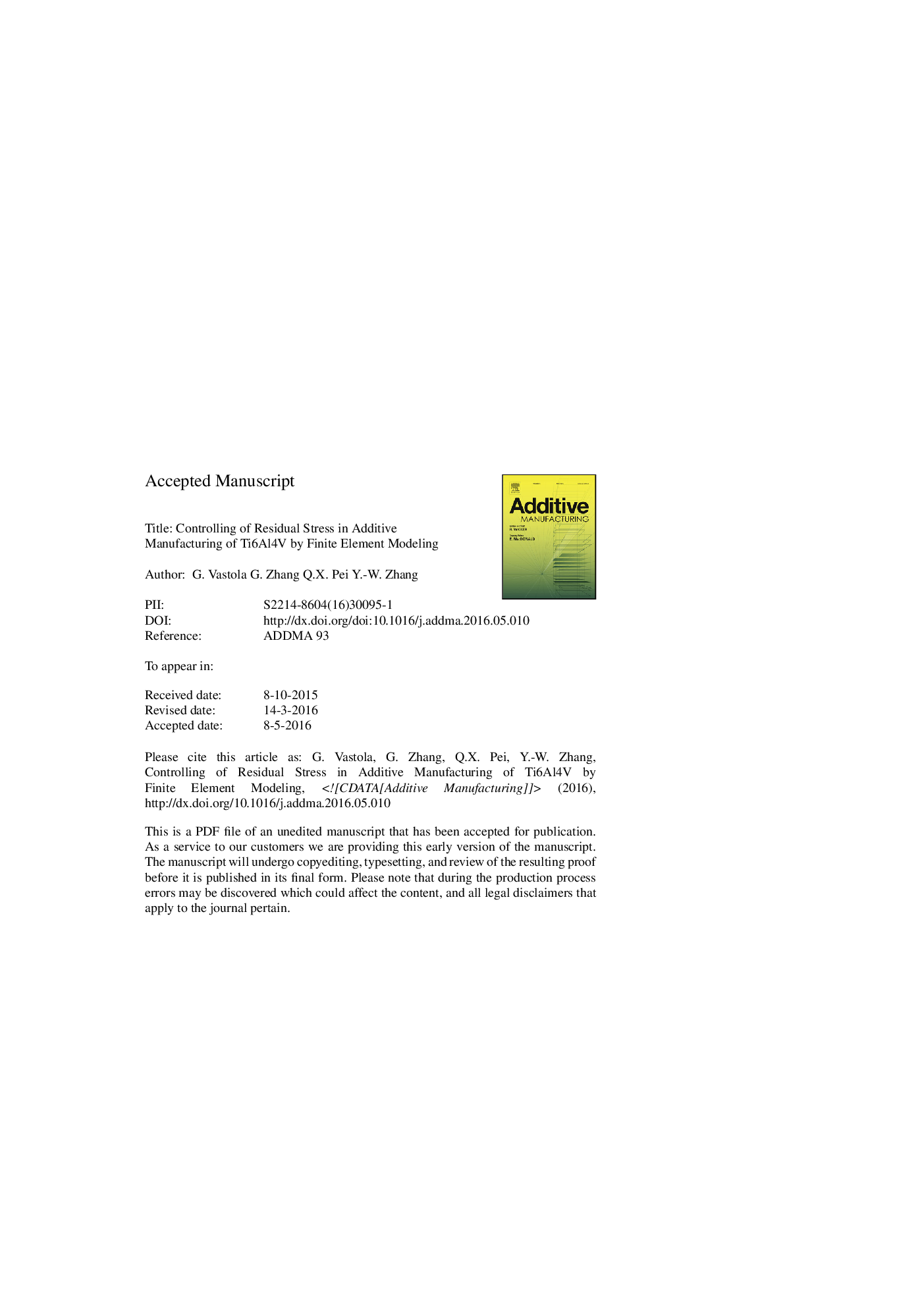| Article ID | Journal | Published Year | Pages | File Type |
|---|---|---|---|---|
| 5020064 | Additive Manufacturing | 2016 | 29 Pages |
Abstract
Minimizing the residual stress build-up in metal-based additive manufacturing plays a pivotal role in selecting a particular material and technique for making an industrial part. In beam-based additive manufacturing, although a great deal of effort has been made to minimize the residual stresses, it is still elusive how to do so by simply optimizing the manufacturing parameters, such as beam size, beam power, and scan speed. With reference to the Ti6Al4V alloy and manufacturing by electron beam melting, we perform systematic finite element modeling of one-pass scanning to study the effects of beam size, beam power density, beam scan speed, and chamber bed temperature on the magnitude and distribution of residual stresses. Our study elucidates both qualitative and quantitative features of the residual stress fields originated by these manufacturing parameters. Our findings can serve as useful guidelines for engineers and designers to deal with residual stress build-up during additive manufacturing of Ti6Al4V.
Keywords
Related Topics
Physical Sciences and Engineering
Engineering
Industrial and Manufacturing Engineering
Authors
G. Vastola, G. Zhang, Q.X. Pei, Y.-W. Zhang,
